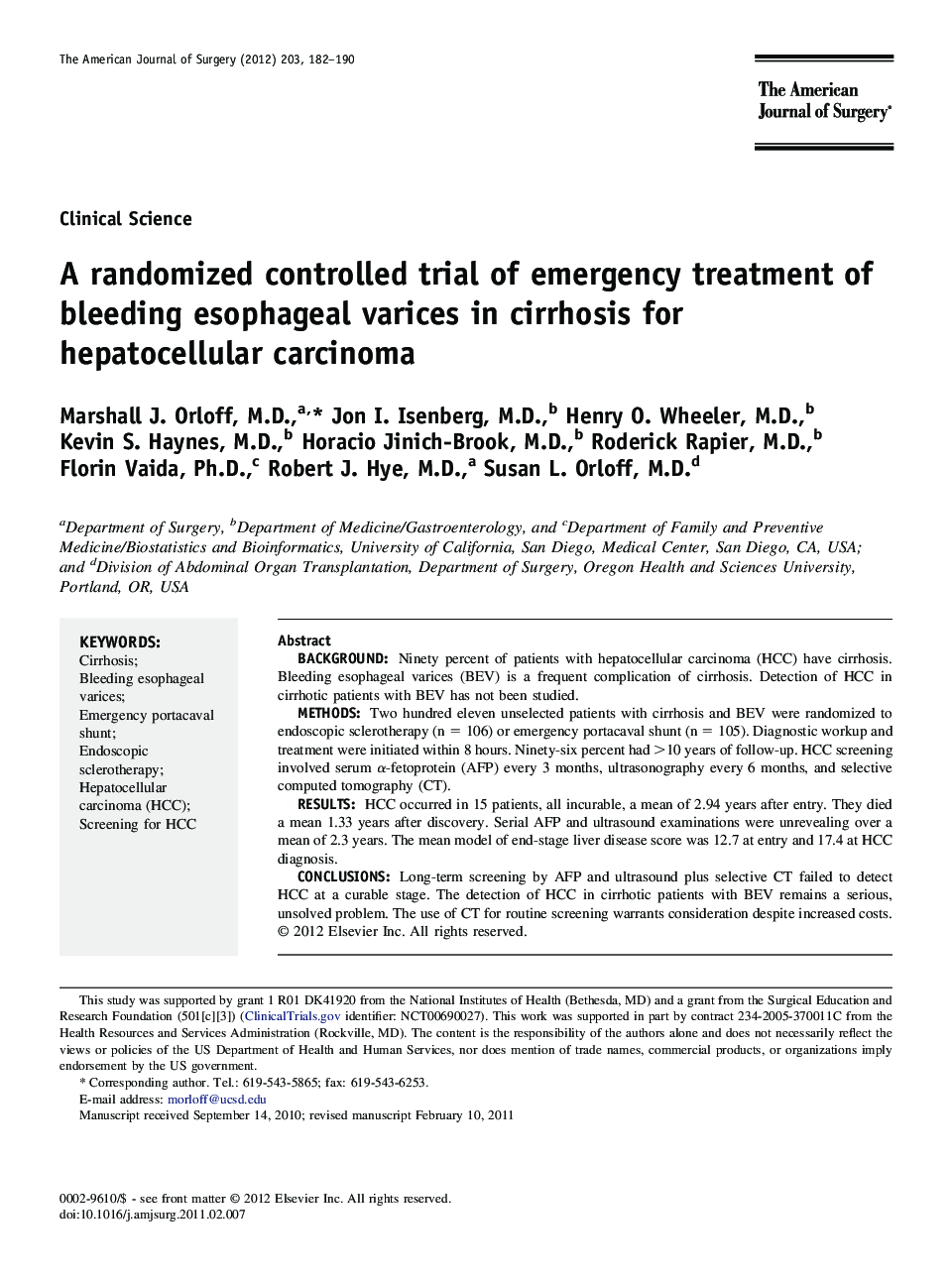| Article ID | Journal | Published Year | Pages | File Type |
|---|---|---|---|---|
| 4279392 | The American Journal of Surgery | 2012 | 9 Pages |
BackgroundNinety percent of patients with hepatocellular carcinoma (HCC) have cirrhosis. Bleeding esophageal varices (BEV) is a frequent complication of cirrhosis. Detection of HCC in cirrhotic patients with BEV has not been studied.MethodsTwo hundred eleven unselected patients with cirrhosis and BEV were randomized to endoscopic sclerotherapy (n = 106) or emergency portacaval shunt (n = 105). Diagnostic workup and treatment were initiated within 8 hours. Ninety-six percent had >10 years of follow-up. HCC screening involved serum α-fetoprotein (AFP) every 3 months, ultrasonography every 6 months, and selective computed tomography (CT).ResultsHCC occurred in 15 patients, all incurable, a mean of 2.94 years after entry. They died a mean 1.33 years after discovery. Serial AFP and ultrasound examinations were unrevealing over a mean of 2.3 years. The mean model of end-stage liver disease score was 12.7 at entry and 17.4 at HCC diagnosis.ConclusionsLong-term screening by AFP and ultrasound plus selective CT failed to detect HCC at a curable stage. The detection of HCC in cirrhotic patients with BEV remains a serious, unsolved problem. The use of CT for routine screening warrants consideration despite increased costs.
